As a child, visual art felt to me like a country with a foreign language hidden behind a wall that I couldn’t really see over. Until around 8 years old when my Uncle Zev (having himself been a photographer) turned my eyes both inward and outward, through the magic of cameras, in this case, a Kodak Brownie Starmite.
(photo from the Brownie Camera page, https://www.brownie-camera.com/form.shtml)
With either the left or right eye pressed to the viewfinder, peering through that tiny window felt immediately like home to this 8-year-old, and just where he wanted to be. It was as if a curtain had risen, setting the stage for further adventure. Years later, I’m still obsessed with looking out at the world through viewfinders, into and through windows both clean or dirty, screens of all sorts, framing devices and lenses. The edges of the camera viewfinder frame what is seen. With painting and drawing, the edges (of paper, panel, canvas, or whatever) are the framer, defining/demarcating/enclosing and bringing to life that visual playing field within which everything being constructed (shapes, lights, darks, colors) has a distinct choreographic presence. The surface is a structural architecture held within its borders. So it is with looking at the world through the viewfinder.
(a very early and strange photo from my childhood bedroom window, approx. 1963)
The window on the back of the Starmite was tiny and discrete, we’re not talking fine glass like a Leica but just a few pieces of plastic; nor the large window we now know from the cell phone. But there was something immediately compelling about how that small window took the eye into light space: a haiku like distillation that for the moment was all that mattered. This unexpected surge of an ‘all that matters feeling’ was like a knock at the door.
Around the same time, another sort of viewfinder was also coming into focus: the windows at school, in the classroom. School, I couldn’t even begin to comprehend, what was it was about, what I was doing there and what did it mean? So, looking out the window became a choice go-to, a meal much more attractive than the activities of the classroom. And on almost every elementary school report card the teacher wrote, ‘he sits and looks out the window’ which of course was true. At home, my mom (who was quite a devoted schoolteacher) would read that out loud, as if to point out a deficiency, but for me those windows, set within their heavy post war oak frames were, between 9:00AM & 3:00PM, everything.
But even earlier in childhood, there was yet another compelling window that played an important role: the car window.
As a kid, I’d go along on shopping errands with my mom and often waited in the car (a used, late 50’s Chevy), while she ran in to pick something up from one shop or another. Sitting in the car alone in the passenger seat, feet up on the dashboard, looking out the window, that silent, visual loop, me and the window, was an embryonic template already mapping a future for the joy of eyes floating playfully while looking through glass.
And especially during rain.
Through that rain drenched windshield, the world of solid form melted, transformed as the water ran down the glass, an optical dream, caressing my gaze within the provocative grip of that sustained moment.
It took years for all these seeds to germinate and ultimately, I’d arrive way down the road with painting, but that story for another time. What I came to sense in those early years but couldn’t yet understand was, that what we do and how we do with our eyes, somehow matters.
On leaving art school in 1982, I forgot about the camera, within my surrounding visual culture then it wasn’t cool. But in 2005, my late friend and dealer Roy Davis, gave me a pocket size digital camera that reignited an old love. Since then, I’ve supplemented and nourished the work of the studio by playing around as much as possible, in a behind the scenes way, with the camera and the possibilities of the frozen moment. Not for the marketplace, nor necessarily to show anyone, but to keep track of where my eyes were going and why, where they were being taken and how and, as a way of noting fleeting moments of feeling.
By 2016, something I knew from Dante, but had never experienced first-hand,
was rearing its head:
Nel mezzo del cammin di nostra vita
mi ritrovai per una selva oscura,
che la diritta via era smarrita.
Midway upon the journey of our life
I found myself within a forest dark,
For the straightforward pathway
had been lost.
WINDOW PLAY
Having lost hold of the compass (a long story not for here) and needing something else than the habit of using paint, I dropped the agenda of even trying to be serious or public facing with whom I had been over the years and instead, for 5 or 6 months, courted another direction of playfulness. Tentatively at first, a new chapter of constructing and demolishing architectural form unfolded, on a simple double hung window in the kitchen alcove. Using very thin, traditional Japanese paper and occasionally string, trusting the impulse of my hands and eyes touching those old flat planes of glass, I attached and detached, attached and detached papers with pieces of tape, also aware of the space beyond and behind the glass across the garden. Window play.
Asking questions but not wanting answers, days and evenings were spent facing the windows with no end in site other than to be present, tasting the surface as the forms shifted. And along the way, each move and each change of light was photographed, which also became a game in its own way.
The following from notes made in 2017.
Standing at this window holding a scissors and paper I’m aware that there is a specific, measurable distance between me and the building over there behind the window.
It has a particular mass and visual weight that seem to be speaking to my body and to the size and placement of the papers. The looking is repetitive and not passive, I’m wrapped up together with this place, like kissing someone. I’ve been standing here for a long while on my side of the window and there is a palpable airspace between us that is assuming an emotional resonance.
I’ve moved into a new apartment and am sniffing out opportunity just as my dog does when she comes into a room. Almost like building a nest, I’m making this place mine by standing at the window with reverence as if doing morning or evening prayers and placing pieces of shaped paper one by one onto the glass, building constructions with small, large, cut or torn pieces, sensing/judging/feeling how they relate to the forms beyond them out there across the yard and, to themselves on the glass. The whole thing feels to me like being inside of an evolving painting and has a living personality far beyond the fact of the materials.
It’s a constant game of building and breaking down… and all of it, now, only exists by way of photographic documentation. What they were in the moments of their making is over and their now vanished presence found only in digital files.
Who is this guy who not so many years ago was an outdoor painter making naturalistically descriptive ‘landscapes’, but now draws on glass using paper and tape searching for the emotional architecture of the moment?
The above window collage photographs in b&w were among the earliest examples of this pursuit, but it rapidly advanced into color using projected light at night.
The online journal TERRAIN.org featured this project years ago in November 2017, at:
https://www.terrain.org/2017/arterrain/stuart-shils/
An Architecture of Paper+Tape/Collages on Glass
check out TERRAIN.org
this has been a first chapter examining the contribution of WINDOWS
to the fertilization of my eyeballs over time, more to come.

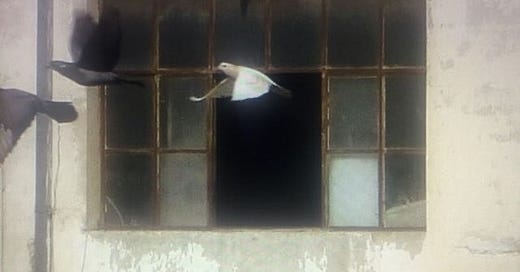




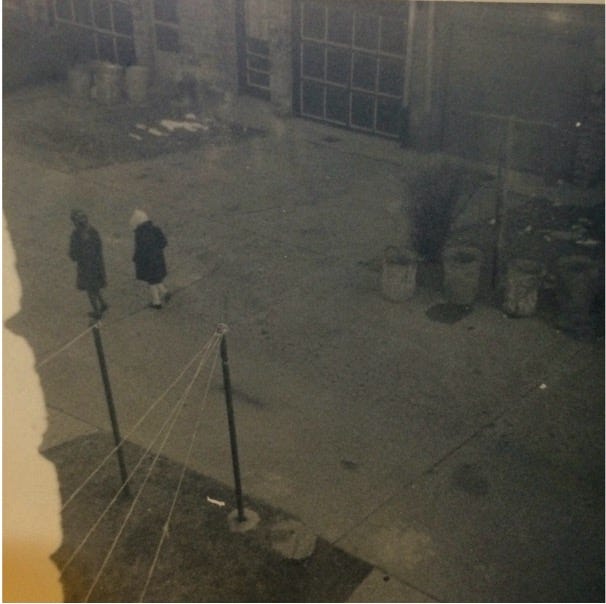


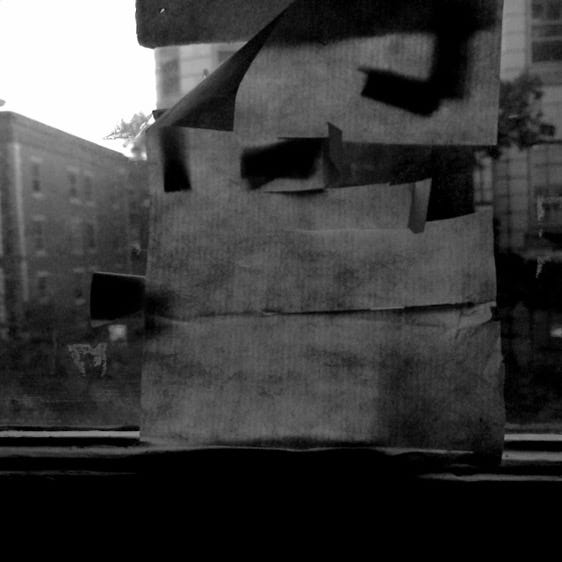
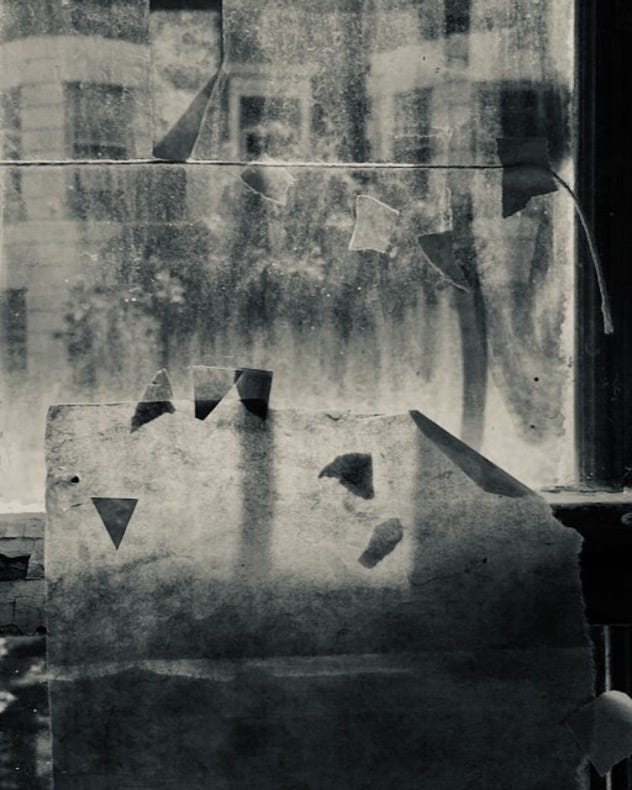
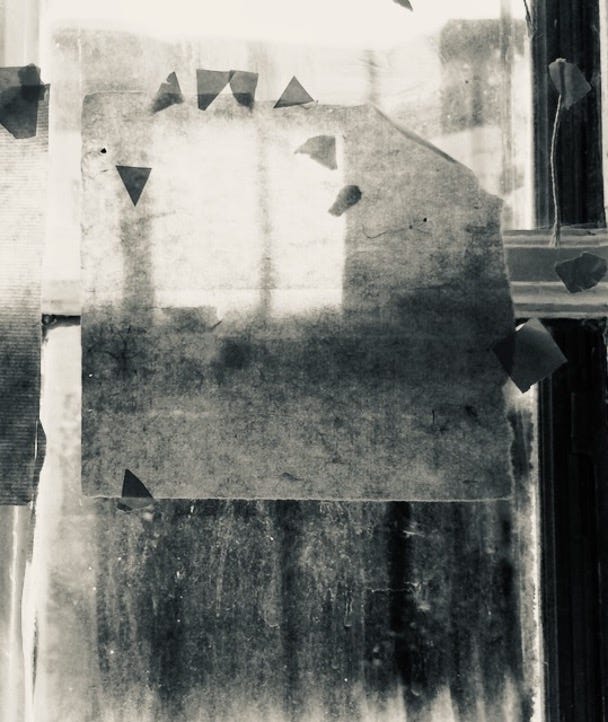

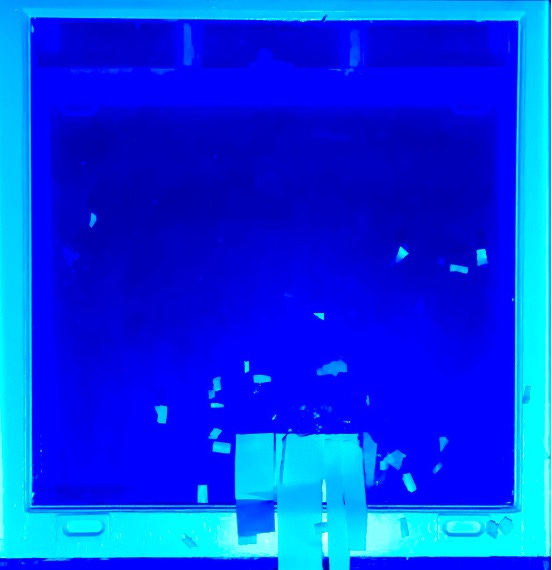
thank you Susan. well, how to bring back exploration is another conversation but perhaps, a place to start is with not nice paintings, so to speak.
i remember some years ago, pre zoom, when everything was still live, i was with a class (out in arizona) and we were doing drawing, and i mentioned that Mrs Diebenkorn had given a collection of her husband's sketch books to the museum at Stanford Univ. and, one student mentioned that she had recently seen a show of those books that the museum had presented after the bequest and, 'that they were not nice'. and everyone looked confused for a moment until they realized she was saying that they weren't nice but rather, they were real and rugged and honestly searching. And that she meant this as commentary on the business we'd been talking about, basically circumventing 'nice', and of course 'nice' is where most of our educations pointed us, to expertise and to conventional evidence of competence, to fitting in, to doing as expected, to doing as others do, to being polite and careful, to being nice.
Recently my mind has been returning to the energy and excitement of my college design and photography classes. After years of working, owning a business, raising children, with the reality of a future shorter than a past, I often wonder how I can bring back exploration. Your story is enlightening. Today heading to an art critique group with “nice” paintings, I’m remembering why I enjoyed your unique classes so much. Thank you for this thoughtful writing.